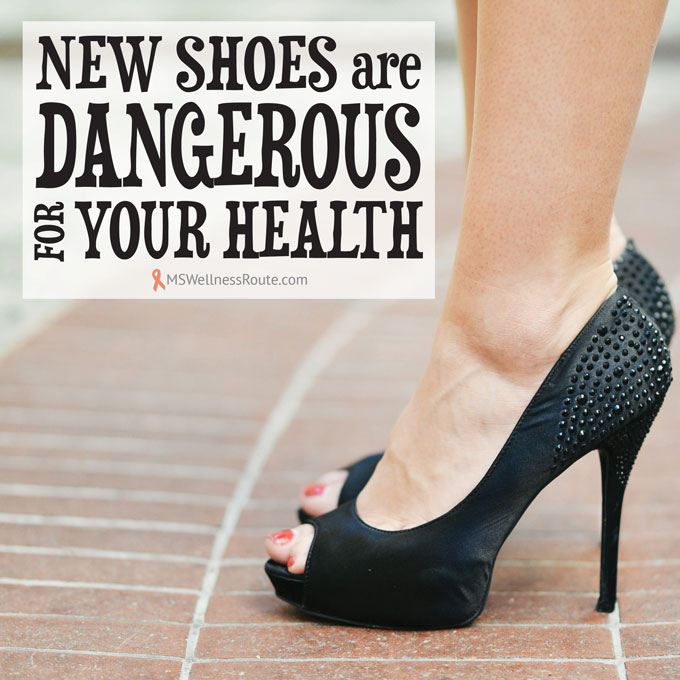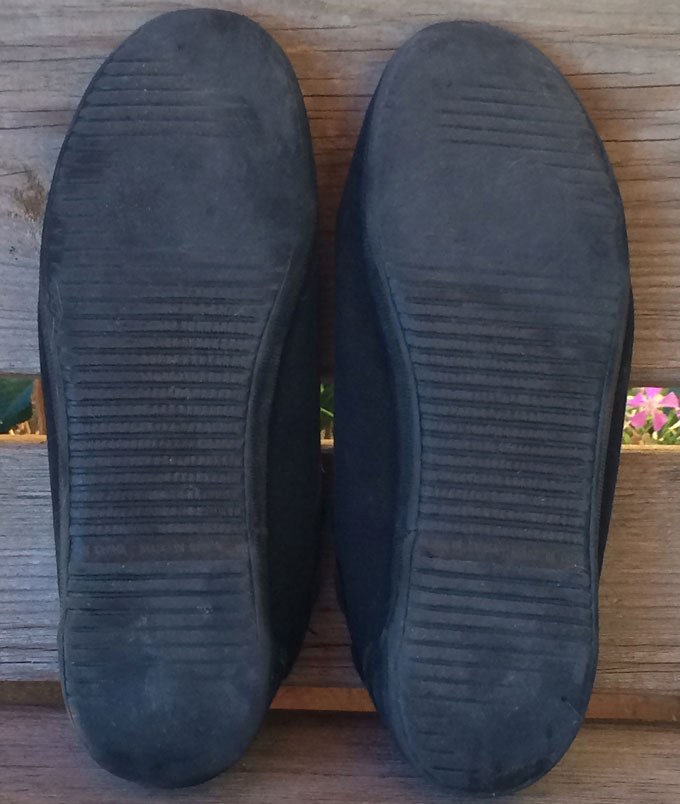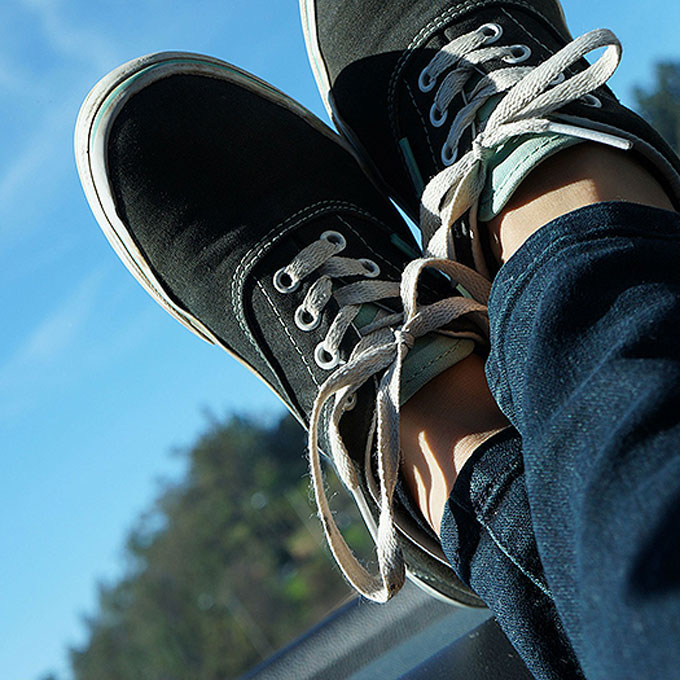Last Updated on January 31, 2025 by Cathy

Most people love getting new shoes. I used to love them too—until Multiple Sclerosis (MS) changed everything. In fact, MS has taken a lot away from me, including my ability to wear just any pair of shoes.
Looking at the soles of my worn-out shoes, they tell a story of how I walk. I have drop foot, and over the years, my gait has worsened. I believe chronic stress plays a big role in this decline.

How MS Affects My Walking
Lately, my drop foot has improved a little. I don’t trip as often, but I’m also very careful and conscious of every step. Instead of looking ahead while I walk, I constantly look down at the ground.
MS has also given me heat intolerance, which makes my symptoms worse as temperatures rise. My legs—especially my left leg—feel weaker, making it even harder to walk.
But it’s not just weakness. My feet feel like they are weighed down with heavy combat boots. They are numb 100% of the time, and when my body gets warmer, the numbness spreads, crawling up from my feet to my knees.
As I struggle to lift my feet, you can hear them skimming the ground, slowly wearing down the soles of my shoes, especially near the toes. Stress makes it worse. When I get overwhelmed, my ankles and knees become stiff, making it even harder to move smoothly. Once again, I hear that familiar sound—my shoes dragging along the floor.
The Wrong Shoes Made Things Worse
Years ago, a physical therapist recommended I buy running shoes for extra support and grip. That was a huge mistake! Those shoes had too much grip, and I fell more times than I could count.
For the past five or six years, I’ve fallen more times than I can remember. After one serious fall that left me with a broken elbow, I developed a new fear. Not of walking—but of falling.
Why People with MS Are at Higher Risk of Falling
MS increases the risk of serious injuries from falls. That’s why choosing the right shoes isn’t just about style—it’s about staying safe and moving with ease.
MS Symptoms That Affect Walking
- Balance Issues – Feeling dizzy or experiencing vertigo makes walking dangerous.
- Fatigue – 80% of people with MS struggle with extreme exhaustion.
- Heat Intolerance – Higher temperatures can worsen MS symptoms, sometimes for hours.
- Spasticity – Stiff, rigid limbs make movement difficult and increase the risk of losing balance.
- Tremors – Uncontrollable shaking in the legs can make walking unsteady.
If you have drop foot, balance problems, or muscle weakness, finding the right pair of shoes is critical for fall prevention.

What to Look for When Buying Shoes
1. The Right Size
- Always measure your feet using a Brannock Device (a foot scale found in shoe stores).
2. Comfort Over Fashion
- Comfort is key! A stylish shoe means nothing if it makes walking harder.
3. Soles and Tread
- Avoid smooth soles that cause slipping.
- Avoid overly grippy soles that may trip you.
- Choose lightweight soles, as heavy shoes make walking more difficult.
4. Flexibility
- Some people prefer sturdy shoes, while others (like me) prefer a little more flexibility. Try different options to see what works best for you.
5. Lightweight Materials
- Look for breathable, lightweight shoes to reduce strain on weak legs.
6. Low Heels Only
- Avoid heels over 2 inches, which can increase balance issues.
7. Avoid Sandals & Backless Shoes
- These are risky if you have balance problems, numbness, or drop foot.
- Flip-flops are especially dangerous—they can slip off and cause a fall.
8. Laces vs. Slip-Ons
- If you struggle with hand weakness, look for velcro shoes or elastic shoelaces that let you slip shoes on without tying them.
9. Use Tools for Easier Wear
- A long-handled shoehorn can help if bending down is difficult.
10. Consider Insoles for Support
- If you struggle with your gait, ask about custom insoles. Mine made a huge difference!
The Right Shoes Make All the Difference
These days, I buy shoes for comfort—not for looks. I don’t care if someone thinks my shoes aren’t stylish. What matters most is that I feel stable and safe.
When you have MS, the best prevention






